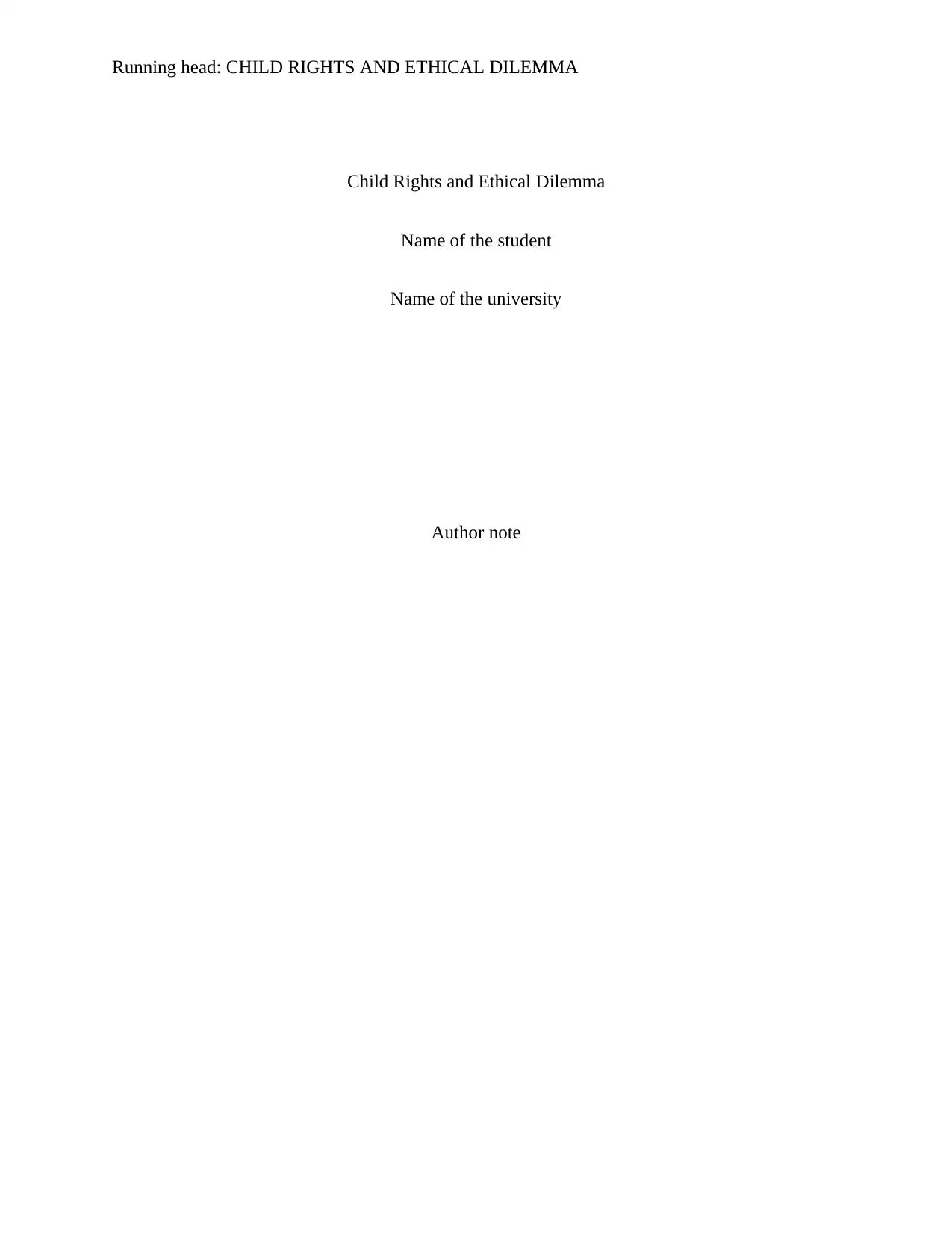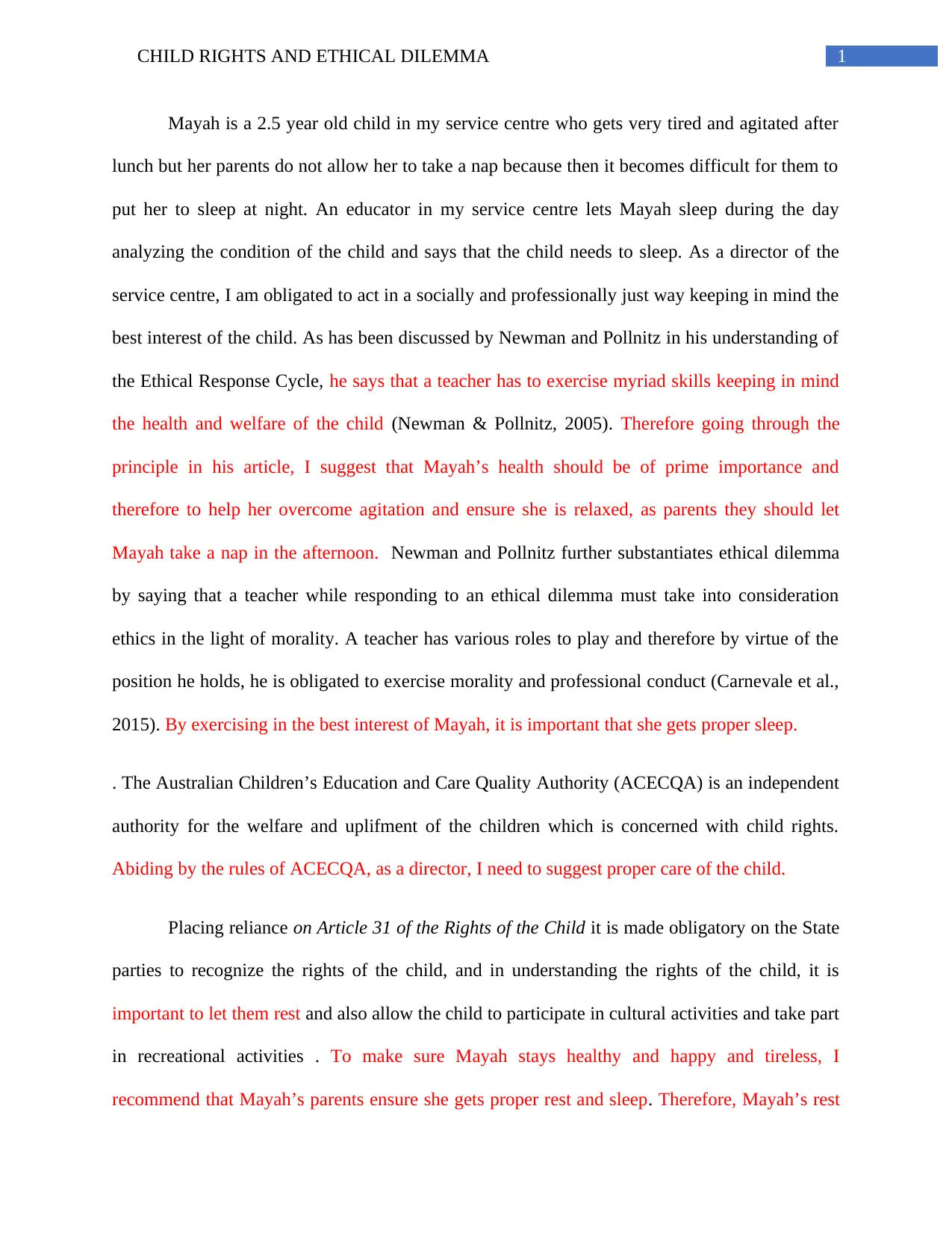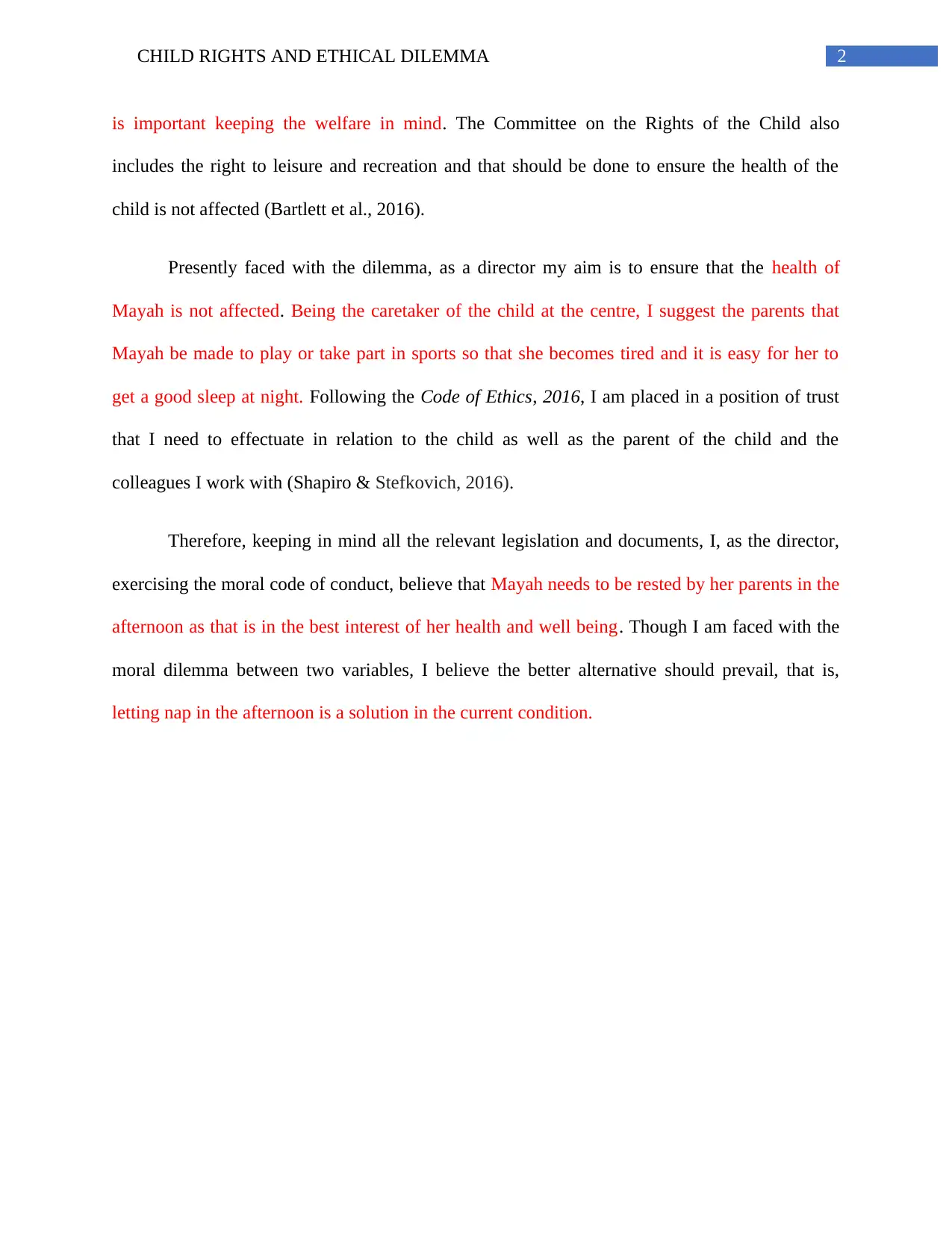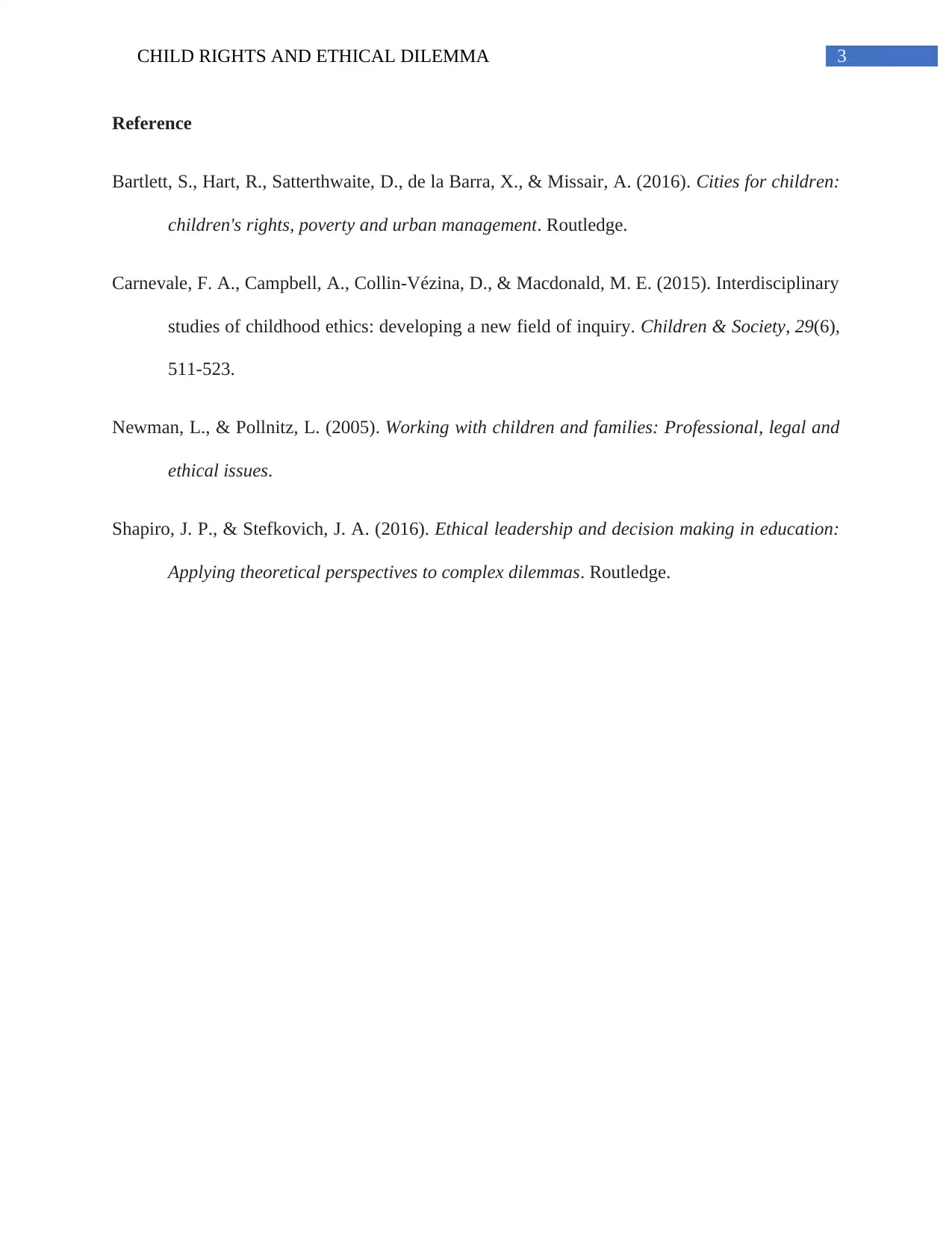Child Rights and Ethical Dilemma: A Case Study of Mayah's Nap
VerifiedAdded on 2021/05/27
|4
|847
|70
Case Study
AI Summary
This case study presents an ethical dilemma faced by a service centre director concerning a 2.5-year-old child named Mayah who becomes agitated after lunch and needs a nap. Mayah's parents, however, do not allow her to sleep during the day. The director, bound by professional ethics, child rights, and the Australian Children’s Education and Care Quality Authority (ACECQA) regulations, must balance the parents' wishes with the child's welfare. Drawing upon Newman and Pollnitz's Ethical Response Cycle and Article 31 of the Rights of the Child, the director suggests that Mayah should be allowed to nap to ensure her health, well-being, and participation in recreational activities. The director emphasizes the importance of adhering to the Code of Ethics (2016) and making decisions that are in the best interest of the child, highlighting the need for rest and proper sleep to maintain Mayah's health. The director recommends strategies to ensure the child's well-being, including allowing her to nap, and to play and take part in sports so that she becomes tired and it is easy for her to get a good sleep at night.
1 out of 4








![[object Object]](/_next/static/media/star-bottom.7253800d.svg)